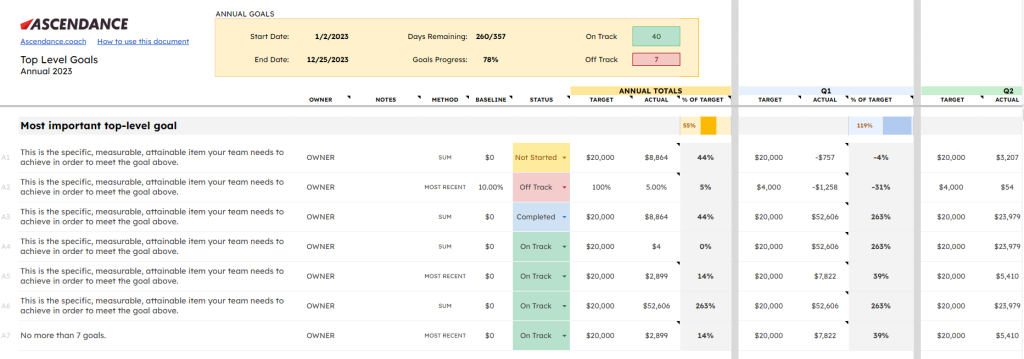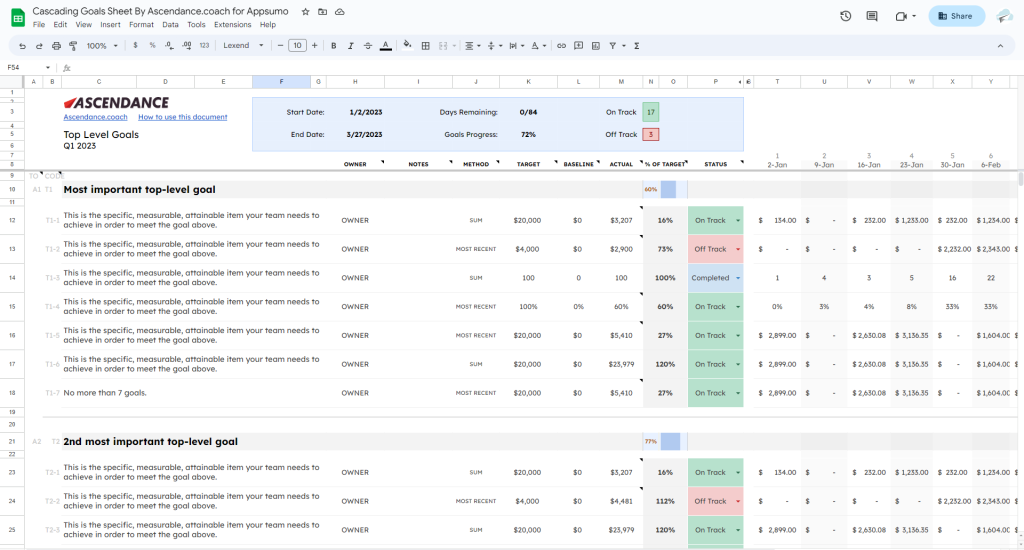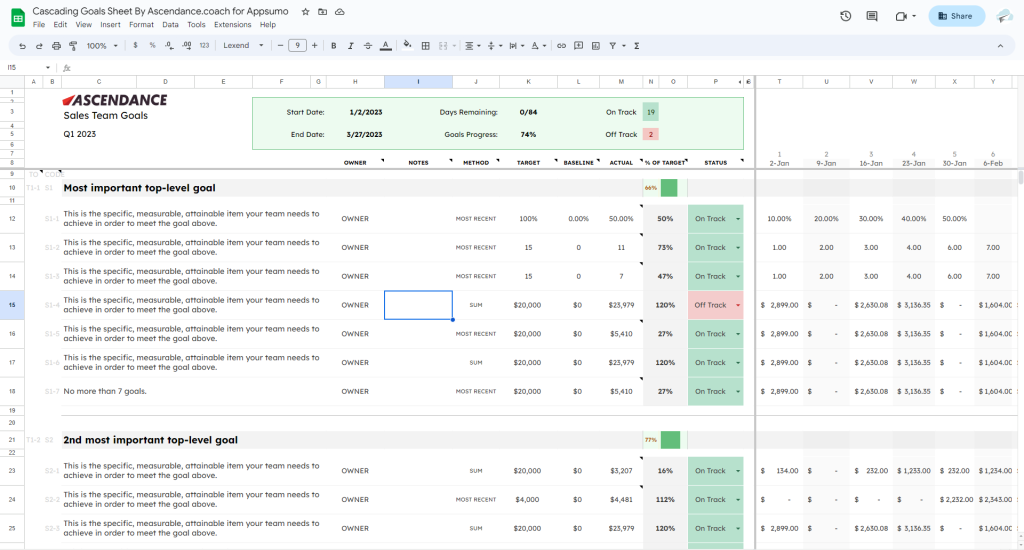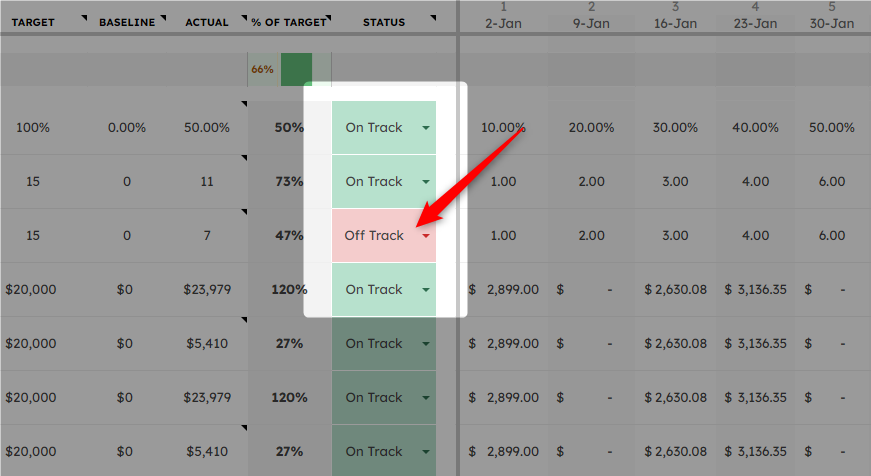Cascading goals are a core aspect of the Ascendance method of managing a business. They help organizations break down their annual goals into manageable quarterly goals, which are further divided into departmental goals for each quarter. This article will guide you through the process of using the Cascading Goals Sheet, a tool designed to help businesses effectively manage and track their progress.
1. Setting Annual Goals

Begin by listing your annual goals for the business. For example, an annual goal might be to generate $4 million in recognized revenue. This could be broken down further into new customer sales, expansion sales, site visits, trade shows, and prospecting calls. You can also include other related goals, such as improving billing and collection processes or enhancing the company’s reputation in the industry.
2. Establishing Quarterly Goals

Next, determine what needs to be accomplished during each quarter to reach the annual goals. For example, if the annual goal is to generate $4 million in recognized revenue, the first quarter’s goal might be to achieve $500,000 in new customer sales. List each of the quarterly goals under the corresponding annual goal.
3. Allocating Departmental Goals

For each quarterly goal, assign tasks to different departments within the company. For instance, if the goal is to attend four trade shows during the first quarter, the sales team could be responsible for attending the events and setting up the booth. Meanwhile, the marketing department could focus on promoting the company’s presence at the trade shows.
4. Tracking Progress
Each week, the person responsible for a specific goal should update their progress on the Cascading Goals Sheet. They can use percentages, numbers, or dollar amounts to indicate their progress toward the goal. Additionally, they should indicate whether the goal is on track, off track, not started, or completed.
5. Weekly Meetings

Hold weekly meetings with the team to discuss the progress of each goal. Focus on any off-track goals and discuss how to get them back on track. Assign tasks to team members to help resolve any issues and ensure that the goal is met. This collaborative approach keeps everyone engaged and accountable for the company’s progress.
6. Grading and Evaluating
At the end of each quarter, give yourself a grade for the company’s performance and list the challenges faced during that period. Duplicate the entire Cascading Goals Sheet and move on to the next quarter’s goals, aligning them with the top-level goals for the year.
7. Repeating the Process
Continue to set and track quarterly goals for each department, adjusting them as necessary to meet the annual objectives. This ongoing process helps to ensure that the entire organization stays focused and moves forward toward accomplishing its goals.
Conclusion
The Cascading Goals Sheet by Ascendance is a valuable tool for businesses looking to effectively manage and track their progress toward annual objectives. By breaking down goals into manageable quarterly and departmental tasks, the entire team can stay focused and accountable, ensuring that the company moves forward and achieves its goals.
